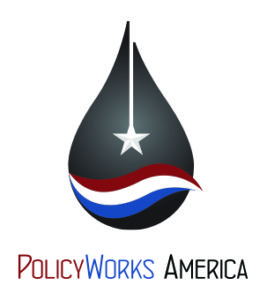EPA Pursues ND Oil Producers – Grow the Fiefdom (or not)!
This is part 2 of a 3-part series. Part 1 can be found here.
Why would EPA target North Dakota in its vendetta against the domestic petroleum industry? Texas and Oklahoma have historically been much more outspoken in opposing federal overreach. Alaska’s delegation vehemently advocated for offshore access and North Slope exploration. Hmmm….
It’s fair to speculate that federal regulators were itching for payback in North Dakota. They had lost in federal court on the Obama Clean Power Plan and Waters of the US. To boot, federal court found in favor of coal suppliers in the Minnkota (North Dakota v. Beverly Heydinger) case.
Or, it could be that the win in Colorado over Noble emboldened the agency to believe the stars were aligned for a major haul in settlement dollars and a PR field day. The process would be under the radar and the coup administered on the QT as the state signed the confidentiality agreement.
Whatever the motivation, information requests from the EPA were delivered to multiple North Dakota oil producers, large and small alike. Meanwhile back in Washington, DC, EPA Administrator McCarthy was testifying before Congress that her agency knew little about the oil and gas industry and was just beginning to learn and understand its operations.
That statement proved surprising in both its partial truth and partial falsehood. In its probe in North Dakota, the agency was requesting pressure data on the “thief hatches” on oil tank batteries. These are nothing more than pressure relief valves that open and close with pressure variations in the tanks. They prevent pressure build ups which could lead to explosions. Emissions from such valves are miniscule, but detectable with a FLIR camera. These are minute engineering details that even many in industry are not privy to.
However, when it came to simple operational “givens” the agency was at sea. Neither the DOJ attorneys nor the EPA knew that ownership in any oil producing property could be split into multiple interest owners…sometimes hundreds in a single well. And, their information demands included financial data that had zero bearing on any air quality issues. Even DOJ, which is supposed to know legal parameters for investigations, did not advise against probing for unrelated and non-essential fiduciary data.
The EPA mindset in the Obama years is crucial. Clearly the political operatives perceive that only they know what is best for the country. Only EPA can properly (and punitively) enforce environmental law. It’s their fiefdom – to extend its reach, influence and power is the mission. North Dakota actions were not about air quality. They were about federal control, pure and simple. States are to be dismissed – only EPA has the will to enforce, to levy penalties for environmental sins. Here is a direct quote from Obama Administration EPA Enforcement Chief Cynthia Giles:
“…states often don’t enforce the laws within their own borders when the people primarily harmed live downwind or downriver in another state. States don’t want to spend their money or their political capital to benefit other states. The federal government has the responsibility to protect everyone — like the millions of people on the East Coast who suffer the effects from large air polluters in the Midwest.”
Do large polluters in the Midwest include North Dakota oil producers? The state is in compliance with national air regulations. But, oil is produced, and is turned into gasoline that fuels automobiles, that emit pollution, and that’s bad!!
So, the plan had to be — put a dent in the industry’s financial viability, give them a black eye as “polluters,” and move the effort out from North Dakota to all other producing states. In fact, while the actions were in progress in North Dakota, information requests began to arrive seeking data on Texas operations. One could almost hear the cash registers ringing at EPA.
But back in North Dakota, all was not going well. Industry was pushing back. A task force was formed by producing companies, the usually candid exchanges between industry and the department of health were gagged by the EPA confidentiality agreement – the governor, legislators and the federal delegation were solicited for their counsel.
A dent in North Dakota’s industry would have dramatic economic ramifications across the state, endangering infrastructure plans, a booming economy with effectively zero unemployment and the harvest of the Bakken resource.
To the companies it very much felt like EPA saying: “We know you’re guilty, you know you’re guilty – don’t make us take you to court, don’t go through the public excoriation we will impose on you. If you do, your tab is in the $billions. Take our deal, and you can lipstick the pig just like Noble did and it will cost you a lot less.”
Industry evidenced willingness to oppose EPA’s aggression, but Company S and Company W were in the lead and their outcomes would be the bellwethers. Both had retained counsel and were proceeding with extreme caution. Meanwhile, the congressional delegation had been back-channeled in, as had the Oversight committees in the House and Senate. All were intensely focused on the prospect of fines resulting from coercion with no specific violations against which to defend. Pointed questioning by Oversight Committee members indicated the under-the-radar jig was up.
What EPA did NOT count on was the core sense of fair play, real world measures of value and government objectivity at play in North Dakota state government. As that government learned of what EPA was attempting to impose on the state’s key businesses, its disenchantment was evidenced by its scrapping of the confidentiality agreement. Not only could it not be party to one-off regulatory regimes for each individual operator (which the state would we be stuck enforcing), it would be agreeing to capital transfers to projects with little or no value to the state.
After this dance with EPA, the state department of health focused as it always had on realistic and tangible outcomes. It sought and obtained a consent decree in federal court that allowed companies to sign on for minimal (reasonable) penalties which could be reduced with evidence of mitigation within a specific time period. No company was forced to sign on, but if one didn’t and was subsequently found to be in violation, the fine and penalties would be stiff indeed.
The consent decree and its signatories were announced by the state, obviating any actions by EPA. It would have to overfile in federal court to challenge the consent decree and show cause why it should be overturned. After more than a year of time investment by EPA and its cohorts at Department of Justice, the two were left with zero penalties collected, zero decisions in their favor.
The scoreboard read: State of North Dakota – 1, EPA/DOJ Fiefdom – 0…except the EPA and DOJ now owned the pig with the lipstick on it.
Up next: Infidels at the Inquisition…



[…] Up next: The fight is on… […]
[…] To read Part 2 of this series, please click here. […]